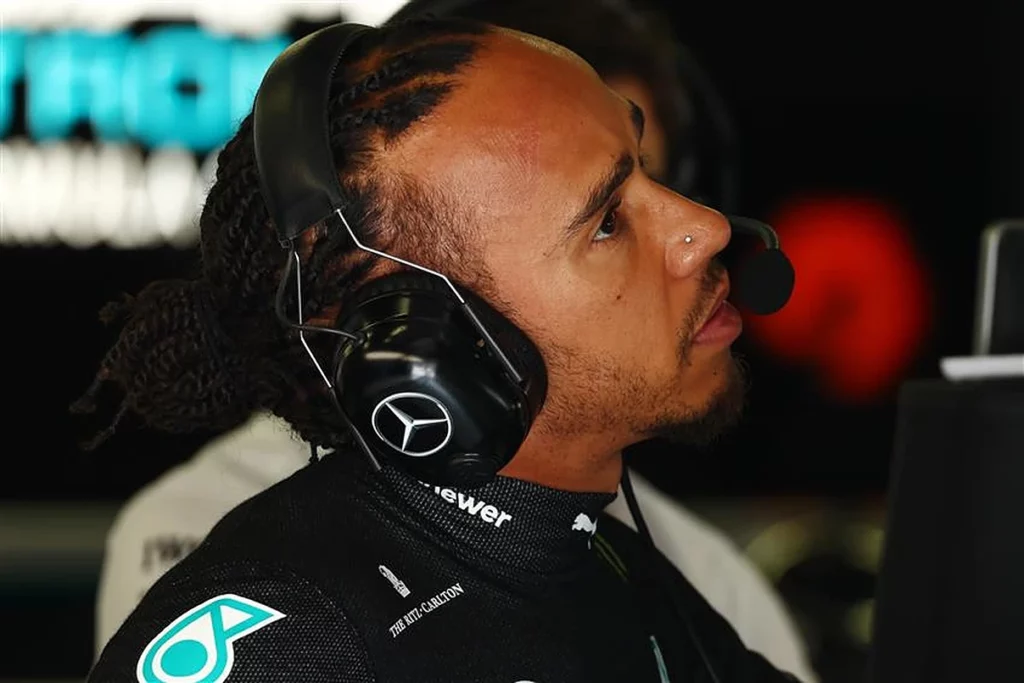The Japanese Grand Prix witnessed Mercedes drivers Lewis Hamilton and George Russell engaged in a high-stakes battle, reminiscent of the fireworks promised by their partnership last year.
While they had previously fought Ferrari for victory in Singapore, their showdown in Japan, though lower in the order, was marked by intensified team radio frustrations.
The media has learned that Mercedes team principal Toto Wolff made the crucial call for Russell to yield to Hamilton in the closing stages of the race.
The strategists were debating whether to switch the positions of the cars or accede to Russell’s request for Hamilton to stay behind until the final lap, allowing them to jointly resist Carlos Sainz’s Ferrari.

Want to work in Formula 1? Browse the latest F1 job vacancies
The broadcast of tense radio exchanges brought the spotlight onto Russell and Hamilton’s relationship, with both drivers downplaying the situation in their post-race comments.
However, the unfolding events during the race added an extra layer of fascination to their partnership, and in the end, Mercedes made the strategic choice.
Russell, on aging hard tires, was the only driver attempting a one-stop strategy and held onto fifth place when Hamilton, with fresher hard tires, caught up with him eight laps from the finish.
Hamilton warned his team that both positions would be lost if Russell didn’t allow him to pass. A lap later, the team instructed Russell to swap positions with Hamilton.
However, Russell had a different idea, suggesting they invert on the last lap, allowing Hamilton to stay behind unless he was battling for a higher position.
The decision, though, had already been made: Russell was instructed to swap positions.
This situation was unlike Singapore, where Sainz and Lando Norris formed a successful alliance to hold off the Mercedes drivers.
Overtaking at Suzuka was easier, given the tire advantage both Hamilton and Sainz had over Russell throughout the race.
Mercedes recognised the need to avoid the risk of Sainz overtaking both their cars, even if it meant Russell becoming an easy target.
This strategic choice was in line with Mercedes’ Saturday evening forecast by Andrew Shovlin, who acknowledged the need to monitor Ferrari strategically.
On the lap after the swap, Hamilton slowed enough through 130R to give Russell DRS to defend against Sainz.
However, Russell’s tires were worn, and Sainz easily passed him on the run to Turn 1.
Hamilton expressed his frustration over the radio, stating that fighting each other was unnecessary, as their primary goal was to outperform Ferrari in the Constructors’ Championship.
Russell conceded that his tires were “toast” by the end of the race and emphasised the team’s decision was the right one.
Despite the early-race battles and late-race team orders, it is challenging to determine whether these incidents significantly impacted their race positions.
Mercedes adopted a pragmatic approach, allowing their drivers to race initially and intervening later to secure the desired positions.
Sainz, seeing the Mercedes cars ahead, assumed they would work together to provide DRS, potentially complicating his pursuit.
However, as he reflected on the situation, he believed that Mercedes holding position could have given him a better chance to pass both cars.
READ: Charles Leclerc claims Ferrari sacrificed him as number 1 driver changes
The early-race skirmishes did not cost either driver significant time, and the end result would not have affected their ability to challenge Charles Leclerc for fourth place.
Beating Ferrari remains the top priority for the team, even as tensions rise between the two drivers.
Russell, whose position in the drivers’ championship is significantly behind Hamilton’s, acknowledges the need to compete with his teammate rather than waiting for him to retire and assume the “team leader” role.

